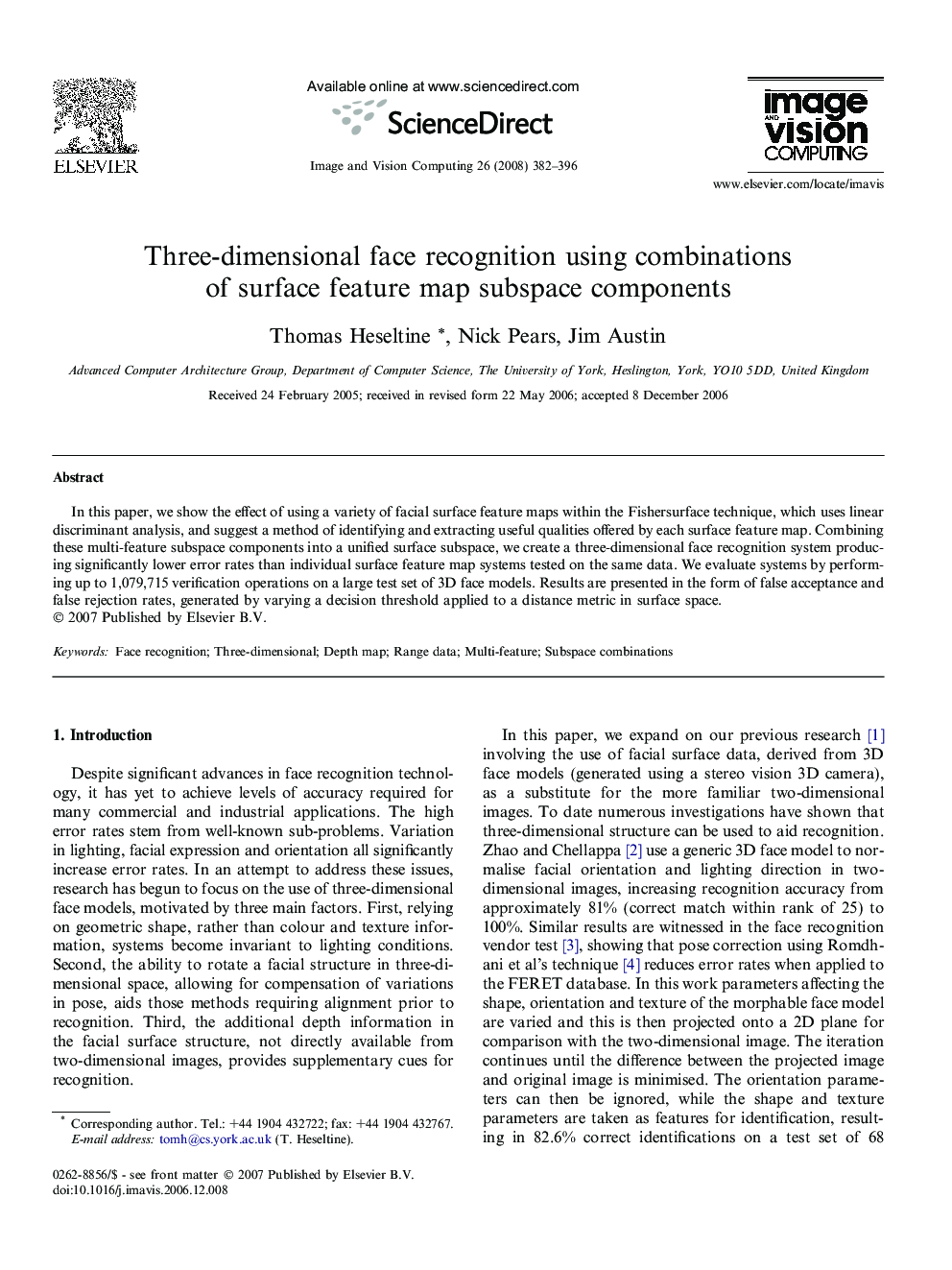| Article ID | Journal | Published Year | Pages | File Type |
|---|---|---|---|---|
| 527372 | Image and Vision Computing | 2008 | 15 Pages |
In this paper, we show the effect of using a variety of facial surface feature maps within the Fishersurface technique, which uses linear discriminant analysis, and suggest a method of identifying and extracting useful qualities offered by each surface feature map. Combining these multi-feature subspace components into a unified surface subspace, we create a three-dimensional face recognition system producing significantly lower error rates than individual surface feature map systems tested on the same data. We evaluate systems by performing up to 1,079,715 verification operations on a large test set of 3D face models. Results are presented in the form of false acceptance and false rejection rates, generated by varying a decision threshold applied to a distance metric in surface space.
